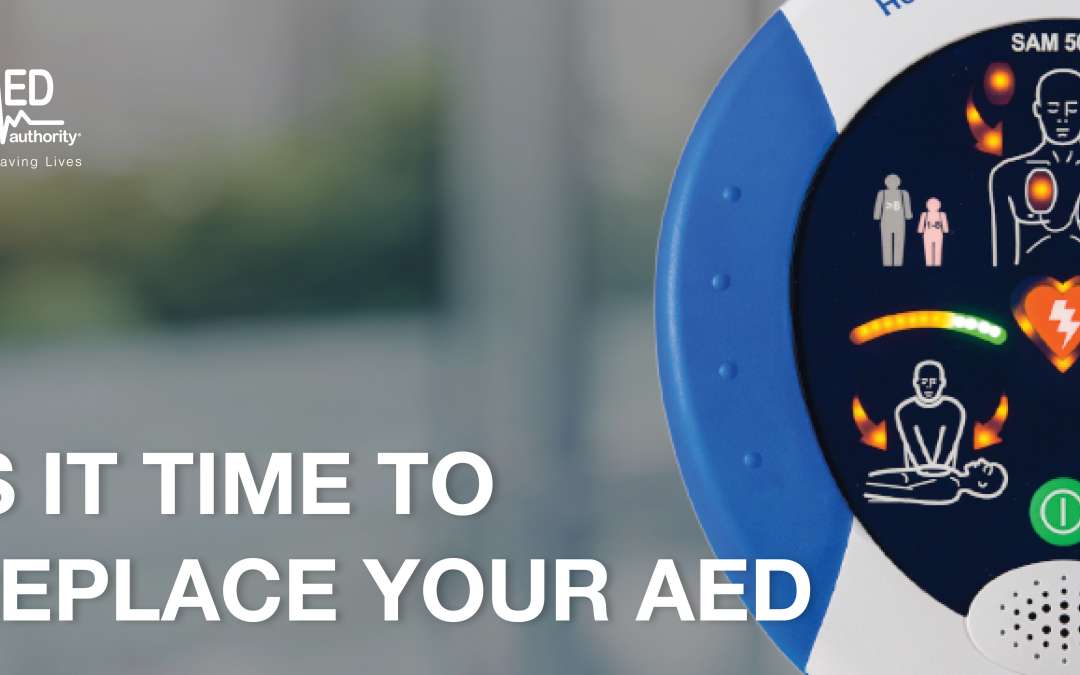Your automated external defibrillator (AED) is one of the most important pieces of equipment in your practice. In a cardiac emergency it could help you save a life. Although not everyone can be saved from sudden cardiac arrest, studies show that early defibrillation can dramatically improve survival rates. As equipment matures and technology advances, it is important to evaluate the age and capabilities of your AEDs to determine if it is time for a replacement. We recommend considering a few things outlined below.
Age of Device
Various external agencies provide advice regarding the useful life of medical equipment. For example, the Australian Taxation Office (ATO) publishes guidelines for common categories of medical equipment for depreciation purposes and lists the effective life of an AED as eight years (see Taxation Ruling TR 2021/3). Some state health authorities have developed similar useful life guidance using evidence-based review.
AEDs operate using replaceable parts. Typically, if the parts are still being manufactured, you can maintain and repair an AED without needing to replace the entire unit. However, manufacturers may discontinue products when parts may become obsolete and are no longer available for service and repairs. In addition, if your warranty is expired, it can become cost-prohibitive to maintain the unit.
When you decide it’s time to replace your AEDs, the team at AED will explain the warranty period of your new devices and the expiry dates for the consumables like batteries and pads. This helps calculate overall cost of ownership and can be an indicator of quality.
Technology Improvements
Biphasic waveforms
Gentle, yet effective, biphasic waveforms are now the standard of care. It has been proven that biphasic waveforms are more effective than monophasic waveforms in converting chaotic heart rhythms to an organized heart rhythm. Because of the effectiveness of biphasic waveforms, defibrillators with monophasic waveforms are no longer manufactured.
Escalating energy
The ability to escalate energy can improve shock success when lower energy shocks fail. This gives those difficult-to-defibrillate patients a better chance of survival. Currently, Lifepak is the only manufacturer that escalates energy to 360J, an energy level used by many paramedics.
A defibrillator purchase is an investment that lasts years. Choosing an AED with full energy provides the flexibility to deliver the dose your patient needs as guidelines and protocols evolve to reflect new understanding and research.
Battery improvements
Battery technology has improved significantly in recent years. Older units often require large, bulky batteries that are expensive to replace. Batteries in current AEDs are typically small and lightweight, carry a higher capacity, and are less expensive on a per year basis.
Usability Improvements
Fully automatic shock
While all AEDs are designed to be user-friendly, fully automatic AEDs make it even easier for a responder to help a victim of sudden cardiac arrest. A fully automatic AED is designed to give a shock automatically, if needed, without the user having to push a button to deliver that shock. The device communicates clear, calm, step-by-step instructions that let responders know when a victim is about to be shocked. Fully automatic models are designed to help responders who may hesitate to push the shock button.
Clear voice prompts and step-by-step instructions
Continual improvements in the quality and clarity of voice prompts and instructions are helping to better guide responders in deploying the AED device and delivering CPR appropriately.
Visual indicators and voice prompt updates have also been added to help instruct the responder in placing the electrode pads appropriately. The simple, step-by-step instructions are continually reviewed and updated based on user feedback.
Ease of maintenance
To increase readiness assurance, today’s AEDs have indicators that notify you when the electrode pads are past the Use By date and when the battery requires replacement. AED Authority has a program that monitors your AEDs and advises you of any expiration dates that are approaching. minimising the maintenance burden and helping to ensure your units will always be supplied and ready for use.
If you’re concerned that your AED might be reaching the end of its useful life, or would like to know more about the latest devices, reach out to the team at AED Authority.


